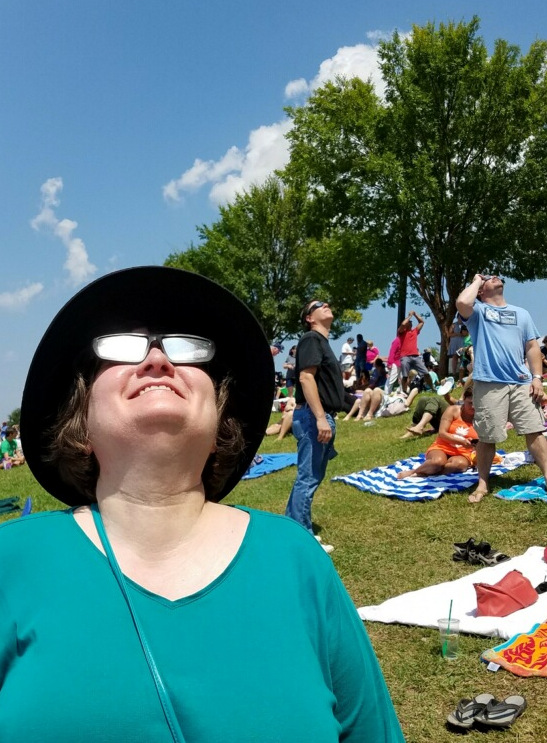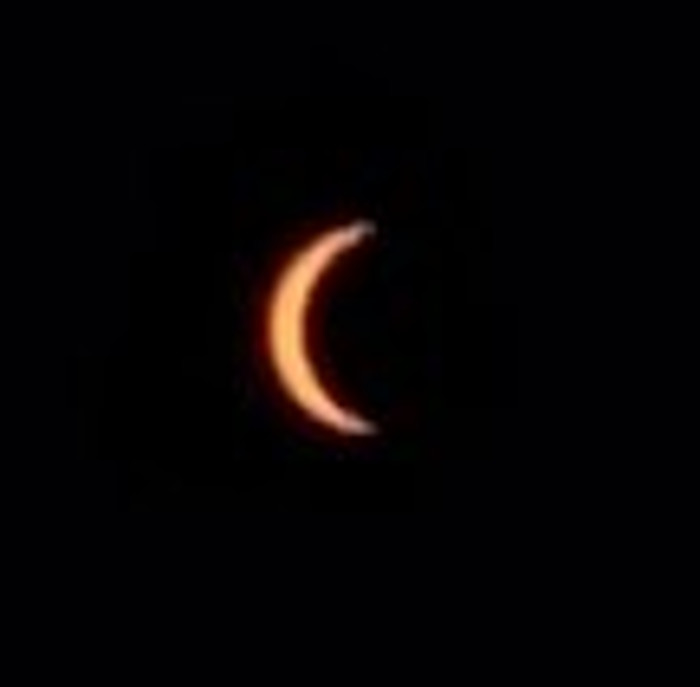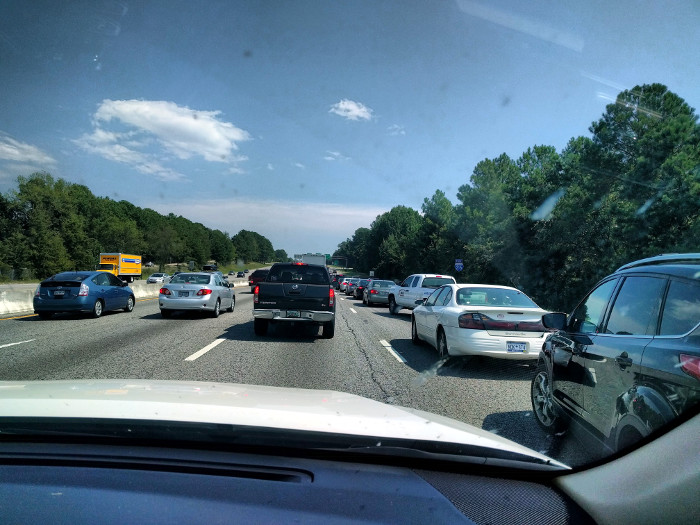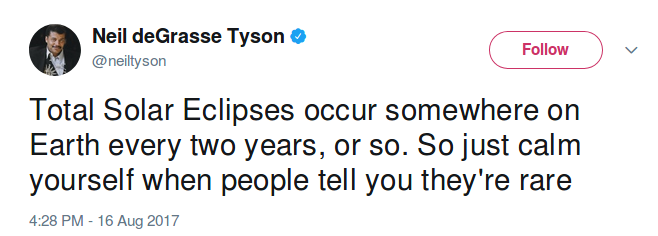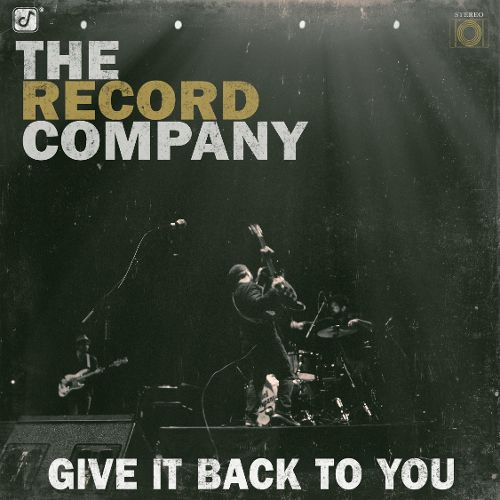Bob is one of my closest friends. We met back in 1988 when we both worked for Northern Telecom, and we’ve managed to stay in touch through a few moves (on my part) and the birth of his daughter Megan. In fact, when Kathy (his wife) announced she was pregnant, I can remember being a little angry. Single people hang out with single people, couples hang out with couples, and parents hang out with other parents. I was certain we wouldn’t be friends with them much longer. I am grateful that I was wrong.
Bob and I share the trait in that we rarely let what other people think influence our behavior. For example, I’m a fifty year old guy who plays Pokémon Go. He’s a fifty year old guy who likes Electronic Dance Music (EDM). This year Megan bought him tickets to the Buku festival in New Orleans, and he enjoyed it so much he decided to get tickets to this year’s Lollapalooza in Chicago. I went to the first Lollapalooza in 1991, and so when he invited me I thought it would be an interesting experience to go again.
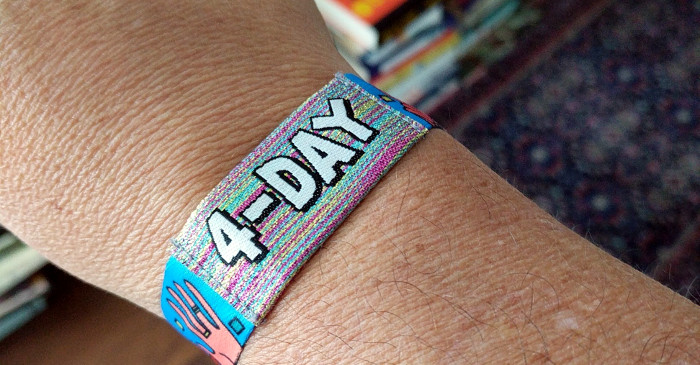
While alternative music is a well established genre now, it wasn’t 26 years ago. What we tend to think of as “alternative” was often just called “college radio” back then (you young folks can look up what a “radio” was). Perry Farrell coined the term “alternative nation” when he established Lollapalooza festival as a farewell tour for his band Jane’s Addiction, and the first festival was a pretty unique experience for me.
I’ve always been attracted to people who defy categorization. Being a “smart guy” in the rural south was pretty isolating, and so I tended to associate with other outcasts, and it wasn’t until I attended the North Carolina School of Science and Math that I really felt like I fit in anywhere, but even there you had your normal high school cliques with the jocks and the rich kids, etc. It was cool to be able to attend a festival more targeted at “my people” for lack of a better word. It wasn’t very commercial and it seemed like people were there for the music as well as, maybe, to learn something.
I enjoyed my first Lolla, so I don’t really understand why it took me several years to return. In part it is because I am adverse to crowds, and also it isn’t a cheap festival. I returned in 1997 when the company I worked for had season tickets to the venue, and it was a shadow of its former self. The amphitheater held over 20,000 people but I think less than 8,000 showed up. I did get to stand feet away from Tricky, and I enjoyed both the Tool and Orbital sets, but I wasn’t surprised when it was announced that it would be the last Lollapalooza tour.
Lollapalooza was revived in 2003 but it wasn’t until 2005 when they settled on Grant Park in Chicago for the location that it became something of a permanent fixture. Over 100,000 people attend each day of the festival, which is now four days long.
I wasn’t sure I could last four days (I didn’t) but I was eager to go to the event and see what it had become.
While I love Chicago, I’m not sure Chicago 100% loves Lollapalooza. I know the hotel industry does since the hotel prices were much higher than normal, and it was looking like it was going to be an expensive trip. Luckily, I have a friend who splits his time between Chicago and Miami and he offered up his apartment for the weekend as he was going to flee the city during the festival. Andrea came along since her and Kathy are friends, and they were going to hang out together while the rest of us went to Grant Park. Four of us were going to the show: me, Bob, Megan and her friend Claire.
While the apartment was over a mile from the park, it was a lovely place to stay. It’s nice to be in a home versus a hotel. Andrea and I arrived Wednesday afternoon, and as she had work to do I decided to prepare myself for the long weekend with a much needed nap.

On Thursday the six of us met for lunch and then the four of us headed over to the event. They were staying a a hotel across from the Trump Tower Chicago. It was funny to watch people taking pictures of themselves with it, usually sporting obscene finger gestures.

There were a couple of entrances to the event, with the main one being near Michigan and Congress. From the hotel we were closer to the northern gate. As you approached the barriers you were asked to hold up your hand with your wristband.

While the instructions were pretty specific, the wristband is to go on the right wrist, not a lot of people seemed to get the memo and both Bob and I were bothered by this for some reason. There was also a long list of things allowed in the park and things forbidden. No outside food or drink but you can bring in a bag. Bob had a Camelbak but even those had to be brought in empty (there were numerous “hydration stations” in the park). Once past the first barriers the line broke into those with bags and those without.
Security was really lax at Lollapalooza. I got the most minimal pat down and there were no metal detectors. While the event was non-smoking, people had no trouble bringing in cigarettes, vapes and other contraband. It was one of the things that really detracted from the show for me.
Once inside we decided to learn the layout. Grant Park is large, and the festival is spread out over seven stages (eight if you count “Kidapalooza”).
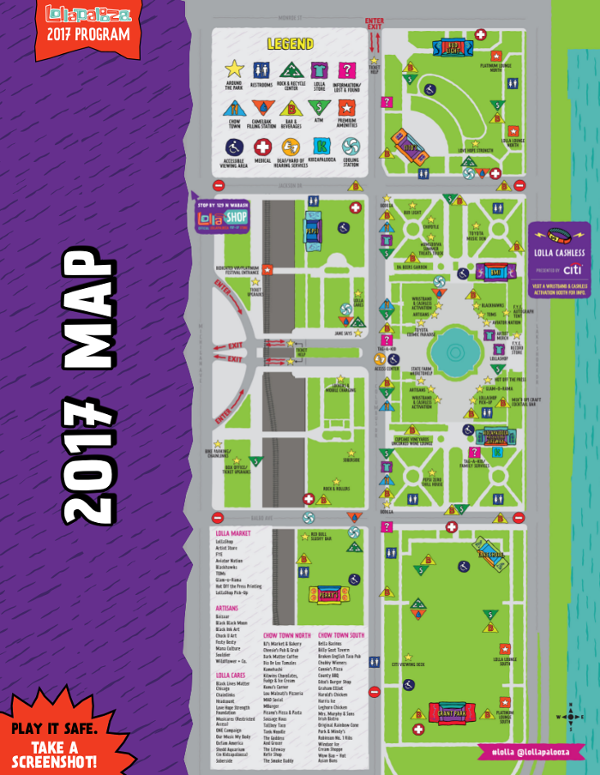
The main stage, Grant Park, was on the south end in a large field. If you faced that stage there was another stage called Lake Shore behind and to the left. The largest headliners were on the Grant stage, and shows were staggered so that they weren’t on at the same time. On the opposite side of the park was the Bud Light stage. I didn’t like that stage much, as it seemed to be in a little valley and the area was much more claustrophobic than the area around Grant. Unless you were pretty close it was hard to see the stage. It also had a second stage off to the side sponsored by Tito’s Vodka.

On the western side of the park was the Perry’s stage featuring EDM acts. We spent a lot of time there since EDM was one of the main reasons for attending. It was the first place we stopped to see an act, in this case Tritonal.

Seeing EDM performances in the middle of the day is a bit odd. First, it’s pretty much just one or two guys hunched over gear and it is hard to differentiate that from just someone clicking on “play” in an app. Also, the strobes, fire and video effects lose something in bright sunlight. Still, it is music to bob your head to and it was kind of fun to hang out and bounce a bit. Bob kept getting high-fives from people walking by and seeing his Buku shirt.
We decided to check out the main Grant Park stage for Cage the Elephant.

The lead singer wore fishnet stockings and a dress, and that at least took me back to my last Lolla when the lead singer for Tool performed in a bustier and kabuki makeup. It was also here that I first experienced the most annoying aspect of the festival.
Many of the people didn’t seem to be there for the music. When a band got started, groups of people would form a little “train” and push their way through the crowd. A few minutes later they would push their way back. Sometime they might stop right in front of you or in the middle of your group. Often they’d light up a cigarette or a joint or start puffing on their vape. Frequently they would be more interested in chatting up the person next to them versus listening to the music. I will say that I was glad that mobile phone usage was less than I expected (I’ve been to concerts recently where people record the whole thing), but being in a crowd of mostly young people with the attention span of gnats lessened the whole thing for me.

We did find refuge in one place – the Cocktail Bar. Situated in the center of Grant Park is the large Buckingham Fountain. Off to the east was a little archway with the words “Cocktail Bar” on it, and inside provided a delightful respite from the crowds. Situated along Lake Shore Drive, this area had grass, trees, lawn chairs and access to a number of decent cocktails. At $14 a drink it was also one of the more affordable items available in the park, believe it or not. In addition to being quiet and relatively free of obnoxious young’uns, there was also a bank of toilets you could use without leaving the area. We would end of spending at least an hour here each day.
Weather was hit and miss Thursday (as well as most of the festival). It looked like it might rain at any minute, and so I was happy to find that the app Dark Sky is now available for Android. This is an app that does “microforecasts” – it doesn’t try to forecast the weather for the day, just the next hour or so. As I was writing this it was raining, and you can see how it will taper off over the next hour.

It’s not 100% accurate out very far, but it is really good for about 30 minutes, sometimes saying things like “light drizzle starting in 7 minutes and lasting 13 minutes”, etc. You can also set it up to send notifications when it is about to rain at your location.
The last show of Thursday had split headliners, with Muse at Grant Park and Lorde at Bud Light. Bob wanted to see Muse so I left him and headed north. About this time Dark Sky warned me that it was getting ready to pour in four minutes, so I made a dash for the exit. The rain was pretty torrential but I was able to make it to the subway without getting too damp, and I watched the rest of the thunderstorm from the comfort (and rather exquisite view) of the apartment. About three songs into the Muse set the show was canceled and everyone was told to leave the park. I understand the reasoning but it would kind of suck if the main band you came to see was canceled as there is no way to reschedule the show.

On Friday we got an earlier start and also entered through the north entrance. First stop was Perry’s for a performance by San Holo. He was pretty good but again it was broad daylight and we were looking at a guy hunched over his equipment.

It was at San Holo that I got my first request for an “old guy” selfie. A young man came up to me and wanted a selfie, and while it was probably just for my devilish good looks I think he thought it funny that someone my age would be at the EDM stage in the middle of the day. Well, as the young kids say, send it.
I got another odd old guy comment later in the day. At Lolla they encourage you to pick up trash, and if you bring them a full bag you can get a small prize, like a shirt. Megan and Claire did it just because they wanted to, and as I was following Megan around and helping with the trash another guy, probably in his mid-40s, walked by and said “you’re a good Dad”.
Heh.
When I decided to come to Lollapalooza I posted the lineup on-line and asked if there was any of the lesser known bands I should try to see, and I was told to check out The Lemon Twigs, so we headed over to their set.
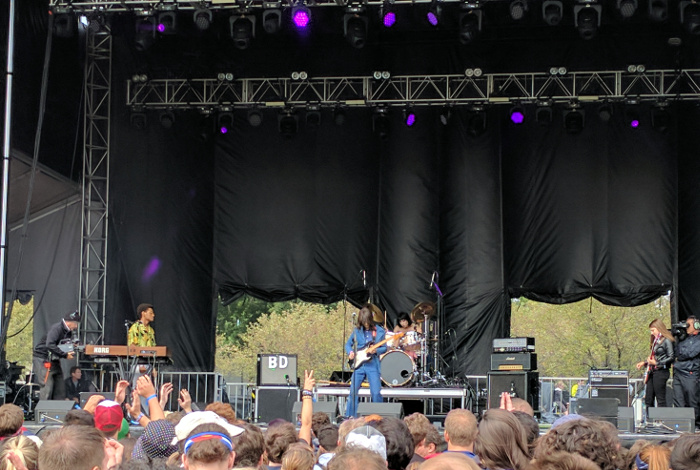
They were … odd. I liked the music well enough, but it seemed like a band in search of an image. The guy on drums was shirtless with white makeup and this whole Marilyn Manson thing going on. The lead singer was dressed in a blue jumpsuit while the guy on keyboards had on a Hawaiian shirt and khakis. The bass player was a woman who kind of stood off by herself. It was cool that the three men would switch positions and instruments, but it was weird to watch.
It was a bit of a toss up for the next act. Bob and I wanted to see Phantogram while the girls wanted to see Bishop Briggs.

I really liked the Phantogram set, well, except for the children constantly pushing themselves forward and back (sigh). What a lot of people don’t realize is that while these band names may sound new, bands like Phantogram have been around for a decade. How do you get to Lollapalooza? Practice, practice, practice.
Bob wanted to get some batteries for the DJ Snake set later that night (he has rave glasses that blink to the music) and so he had to leave the park. I went north to catch the end of the Tegan and Sara set at the Bud Light stage.
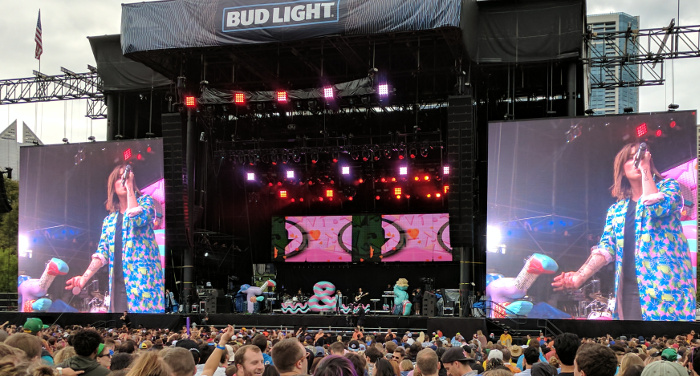
As I mentioned above, I really didn’t like this stage. It felt very boxed-in and with the level of acts performing here you could always expect a crowd.
We all decided to meet back at the Cocktail Bar.

It was a little more crowded than on Thursday, but we managed to find seats. Bob had tried to smuggle in three packages of Reese’s Peanut Butter Cups, but of course the crack security staff confiscated them. Well, two of the packages – for some reason they left him one. Sharp as tacks they was.
We left the bar and headed back north to check out Foster the People. It was a bit more of a madhouse so we kind of stayed toward the back. While the lens was kind of angled here, you can get an idea of how low the stage looked from the back.

The final show for Friday was DJ Snake at Perry’s. Yes, there was fire.

And to answer your question: yes, the old guy did bounce, and I did “get low” when he said to “get low”.

We got a later start on Saturday and decided to enter at the main entrance. This was a mistake. It took over 45 minutes to get in. Of course, after the wait I wasn’t even touched by security, just waved right through.

We wandered around a bit and decided to try to get decent spots for Glass Animals. Megan took a group selfie:

Left to right: Me, Claire, Bob and Megan.
I’m not that familiar with Glass Animals, although I’ve heard them on SiriusXM “Alt. Nation”. I enjoyed their set, but one thing happened that kind of illustrated my biggest disappointment with members of the crowd.

When I used to go to concerts, people would smuggle in beach balls. Once in the venue, they’d inflate them and play “keep it away from security”. It was fun to bounce them around waiting for the show to start.
Glass Animals have a song called “Pork Soda” with the line “pineapples in my head” and images of the fruit appear throughout their show. Before they started a roadie came out with a bunch of inflatable pineapples, and he handed them out to the crowd. Instead of tossing them around, most people just kept them as souvenirs (sigh).
Despite that, I enjoyed the show and plan to check out their music.
Now the one show I’d been waiting for was Banks. I am a huge fan of Banks. Had I bought Goddess on vinyl I would have wore it out. Of all the performers in the lineup for this year’s Lollapalooza, hers was the show I would not miss, and I made sure to get there early for a decent spot right in front of the stage.
When you are waiting for a show to start, they would often post pictures and videos on the screen by the side of the stage. Some of those would feature bands “From the Vault” (i.e. older Lollapalooza festivals). When I mentioned earlier that it can take a decade for a band to make it to the Lolla stage, many of the bands that have played here seemed to have disappeared. Take Broken Social Scene from 2008:

or Delta Spirit from 2012:
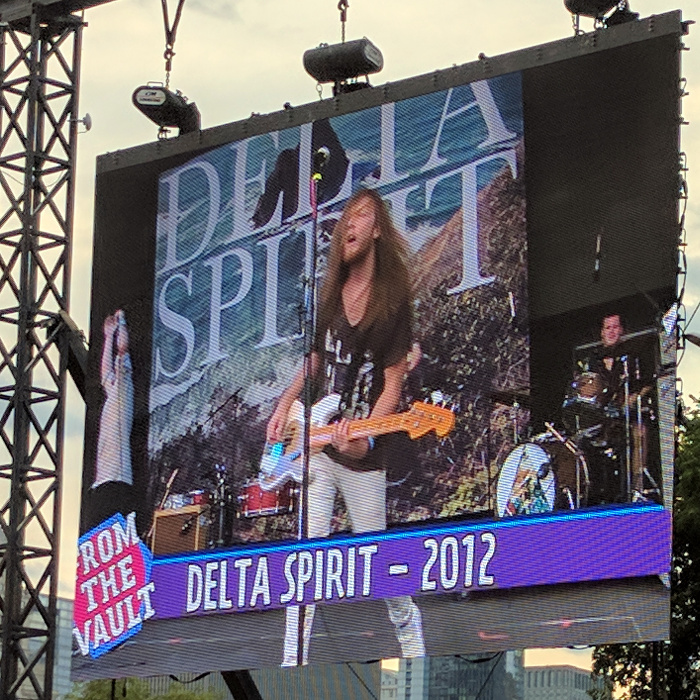
Never heard of either of those.
Anyway, I really liked the Banks crowd. Of all the bands I had seen at the festival, I felt most at home among these people. You could feel the excitement build as it got closer for the show to start. One thing that is really cool about Lollapalooza is the bands start on time – the schedule is very tight.

Banks strode onto the stage flanked by two dancers in mesh and launched into “Poltergeist”. It was magical. Her music is pretty ethereal in the first place, and with the addition of the choreography it just jelled. It was the only set I saw all weekend that tried an artistic presentation, and yes while I’m biased I think she killed. Most of the tracks were off her second album, The Altar but she did play several from Goddess including “Begging for Thread” which is probably how most people know her.
Afterward I thought about heading north to see The xx, but I might have mentioned I hated the Bud Light stage, so still high from the Banks show I headed out.
I skipped Sunday. Andrea and I had a late brunch and then met Kathy to go and hang out at the zoo. I did have a slight FOMO, and one thing did happen that I would have liked.

Bob and the girls went back to the Cocktail Bar, and there was a stand there promoting Tito’s vodka. After chatting with the person in the booth for awhile, they were given wristbands that let them in to a special lounge near the Tito’s stage. It was apparently very nice with an open bar, but I just couldn’t handle the thought of the crowds one more day.
Overall, I’m glad I went but unless something unusual happens it will probably be another 26 years before I go back, although who can guess what Lollapalooza would be like that far into the future. I know I’m in the “hey, you kids get off my lawn” age bracket, but I was pretty disappointed with the most of the people in the crowd. They seemed very self-centered and more interested in being seen than seeing. A lot of the young women wore fairly revealing clothing, and although few people can actually pull that look off I was happy that they were comfortable enough in their body image to try. The closest thing to a theme among the women was to wear Chuck Taylors (Converse All-Star sneakers, preferably in black), Daisy Dukes short enough that the pockets showed and mirrored sunglasses, which seem to be making a comeback. The guys wore mostly athletic jerseys, namely NBA, although in any particular group you couldn’t wear the same jersey. Of course there was the one dude with a jersey with the number “18” on it with the name “You Over” on the back, and I just had to wonder if that ever worked to meet girls (my guess is, no).
Around the food areas the trash was pretty impressive, even while people like Claire and Megan worked to pick some of it up. It made me despair a little for our future, but I bet that thought has occurred to everyone who reaches my age for as long as people have been reaching my age.
This also wasn’t the crowd I remember from the first Lollapalooza, at least through the rosy lens of a quarter century. At least there was the exception of the crowd at Banks. I stood next to a young lady from Columbus, Ohio, whose head was nearly shaved. She had modest gauges with hoop earrings through them, and this was her third or fourth Banks show. She didn’t seem ruled by her mobile phone, and was both well spoken and intelligent. It reminds me of one of my favorite quotes, this one from Henry Rollins:
“I want a soul mate who can sit me down, shut me up, tell me ten things I don’t already know, and make me laugh. I don’t care what you look like, just turn me on. And if you can do that, I will follow you on bloody stumps through the snow. I will nibble your mukluks with my own teeth. I will do your windows. I will care about your feelings. Just have something in there.”
This won’t be my last music festival, I still have Burning Man on my bucket list, but I hope there is more there, there, at the next one.



